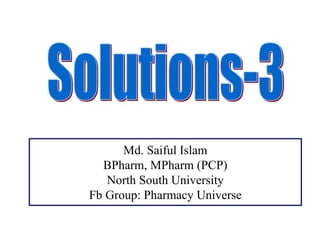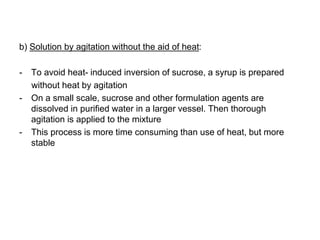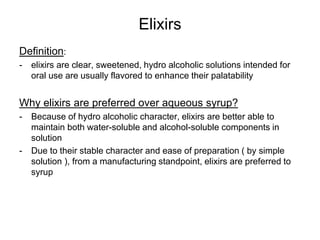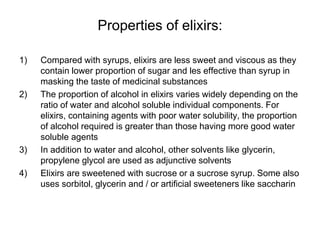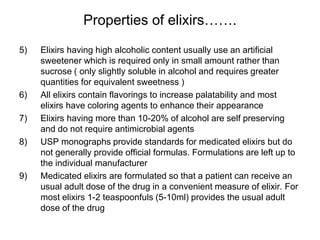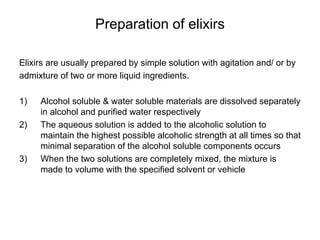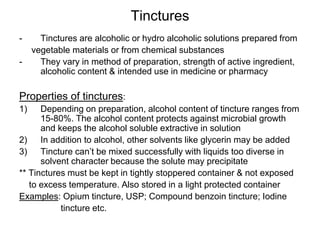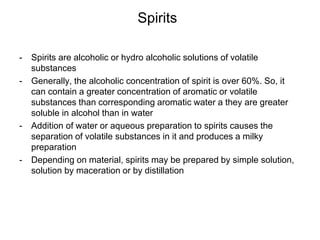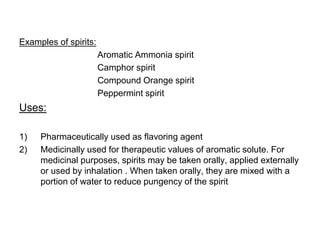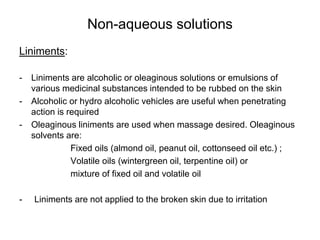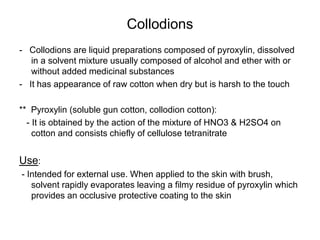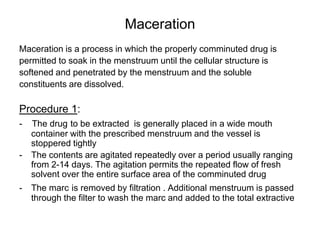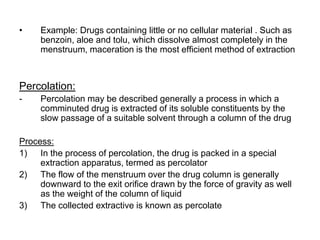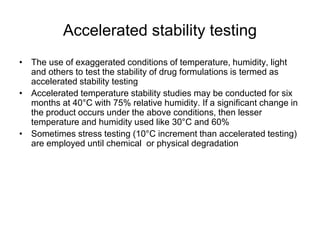This document discusses different types of liquid pharmaceutical preparations including syrups, elixirs, tinctures, spirits, aromatic waters, liniments, and collodions. It describes the common methods used to prepare these solutions, such as solution with heat, agitation, percolation, and maceration. Key points include that syrups are typically prepared via one of four methods depending on ingredient characteristics, while elixirs are preferred over syrups for maintaining both water-soluble and alcohol-soluble components. Tinctures contain 15-80% alcohol and are prepared from plant or chemical substances. Stability testing ensures formulations meet shelf-life requirements.
